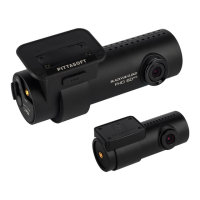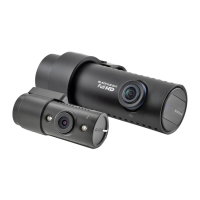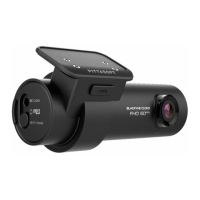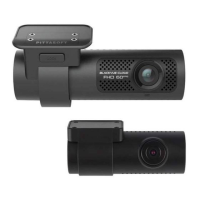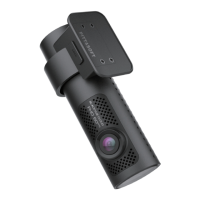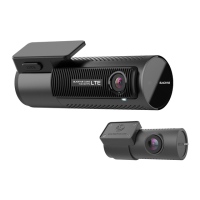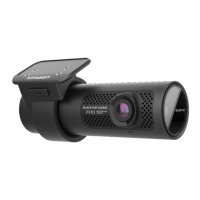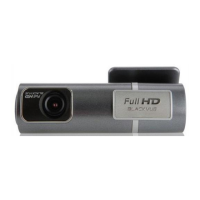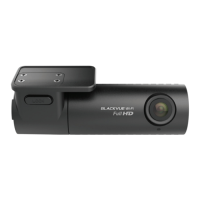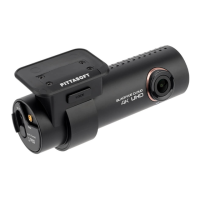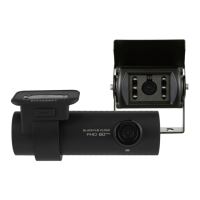
Do you have a question about the BlackVue DR750S-2CH Truck and is the answer not in the manual?
| Rear Camera Frame Rate | 30 FPS |
|---|---|
| Connectivity | Wi-Fi, GPS |
| Cloud Compatibility | Yes |
| Impact Detection | Yes |
| Motion Detection | Yes |
| Camera Type | Dual |
| Channels | 2 |
| Front Camera Resolution | 1080p |
| Rear Camera Resolution | 1080p |
| Image Sensor | CMOS |
| Storage | microSD Card |
| Power Source | 12V/24V DC |
| Operating Temperature | -20°C to 70°C (-4°F to 158°F) |
| Parking Mode | Yes |
| Dimensions (Front Camera) | 108mm x 34mm x 42mm |
| Dimensions (Rear Camera) | 108mm x 34mm x 42mm |
| Viewing Angle | 139° (Front) |
The main forward-facing camera unit.
The secondary rear-facing camera unit.
Cable for connecting the dashcam to a power source.
Waterproof cable connecting the front and rear cameras.
Includes tape, screws, clips, and pry tool for installation.
Contains the memory card and its reader for storage.
The user manual document itself.
Diagram identifying parts like lock button, camera lens, and mounting bracket.
Explains the blinking patterns of the front security LED.
Indicates the GPS status of the dashcam.
Details the meaning of the recording LED colors and patterns.
Identifies labels for Wi-Fi, Cloud, Serial number, and QR code.
Explains the status of the Wi-Fi and Internet connection LED.
Describes how the proximity sensor controls audio recording or triggers manual recording.
Diagram identifying parts like camera lens, illumination sensor, IR LEDs, and mounting bracket.
Details the operations of the Wi-Fi/Format button.
Describes the illumination sensor, IR LEDs, and mounting bracket of the rear camera.
Crucial safety advice regarding installation location to avoid obstructing the driver's view.
Steps for attaching the front camera to the windshield behind the rear-view mirror.
Guidance on adjusting the front camera lens angle for optimal road recording.
Instructions for securely attaching the rear camera mounting bracket to the vehicle's exterior.
How to connect the front and rear cameras using the provided coaxial cable.
Steps for connecting the power cord to the dashcam and power source.
Tips for routing and securing cables using the pry tool and trim molding.
Procedure for turning on the engine to power the dashcam and begin recording.
How the dashcam operates after the engine is off and options for continuous recording.
Specifies the model name, physical dimensions, and weight of the cameras.
Details supported microSD card sizes and available recording modes.
Technical details about camera sensors, viewing angles, resolution, frame rate, and compression.
Information on built-in Wi-Fi, GPS, microphone, and speaker functionalities.
Describes status LEDs and the infrared light wavelength for interior illumination.
Explains the operation of the Wi-Fi/Format button and the proximity sensor.
Details the super capacitor backup, input voltage range, and power consumption figures.
Specifies the temperature ranges for operation, storage, and high-temperature shutdown.
Lists regulatory certifications, software compatibility, and file management system.
